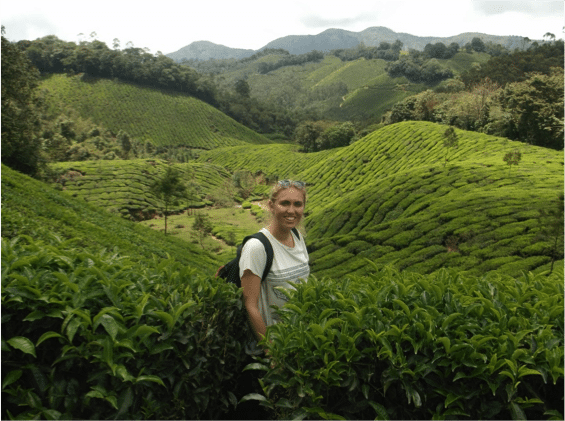Emma Hollows is a student from Manchester, England, going into her final year at the University of Cambridge. From August 7th to September 24th she spent 7 weeks of her summer vacation in India exploring Gujarat and Kerala to investigate the costumes and make-up of Indian celebrations. During her trip, Emma wrote a blog series for Performing Arts Abroad as she participated in various festivals and attended Kerala Kalamandalam, a performing arts university teaching students the music, dances, costumes and make-up used in festivals. This is the final issue of this special series, being released after Emma’s return to the UK…
So this is my final blog and the end of my adventure in India. The past seven weeks of vivid colours, spices and intense humidity have been an assault on my senses that has made England seem so bland in comparison. Throughout my trip I have been welcomed into the extended family of India by everyone from my host family whom I stayed with for nearly three weeks, to people I sat next to on the bus for no more than 5 minutes, everyone invited me into their homes to meet their families and celebrate with them.
After the four days of Onam celebrations finished, I had a few days before Kerala Kalamandalam, the performing arts university where I had been shadowing students to learn about their costumes and make up, reopened after the students’ vacation. During those days I managed to alternate between going to the library at Kerala Sangeetha Nataka Akademi which promotes Keralan performing arts internationally, and doing some sightseeing. I spent one day trekking in Munnar which is utterly incredible. The area is a patchwork of tea plantations undulating across the landscape with villages clustered in the bottom of the valleys. Another day I went kayaking on the backwaters of Alleppey rather than the traditional houseboats which most tourists use. Kayaking meant that we could go down all of the narrow canals which the houseboats cannot fit along but are amazing with vines and coconut trees drooping overhead. The people living in the houses which line the banks of the canals wave and shout hello as they wash their clothes and bathe in the waters.
On my last day at Kerala Kalamandalam there was a Kathakali performance held in the evening as part of a special day celebrating all influential people from India’s performing arts. The make-up teacher invited me to come to the dressing rooms to watch the students prepare. Kathakali is the most famous Keralan theatre due to its elaborate make-up with paper chutti exaggerating their facial structure. The make-up alone takes 3 hours and then the costume can take up to another hour. The performance began at 9pm and ended at dawn. Traditionally Kathakali was performed in the courtyards of temples across the state announced by the musicians singing and drumming on chenda and madhalam. When the dancers enter their movements are slow, controlled and repetitive but get faster during the performance. The bells attached to their legs emphasise each step that they make. Despite moving from temples to now being performed in theatres everywhere, ritual remains an important part of Kathakali performances as each dancer receives blessing from every member of the team who help them to prepare as well as all of the musicians once they enter the stage.
At the end of my trip I returned to stay with my host family in Gujarat for a few days which was wonderful. I really do feel like I have a second family in India now – they have invited me to the family wedding in December so you never know, I may be back in India sooner than I thought!
Written by Emma Hollows
Performing Arts Abroad guest blogger and costume designer
